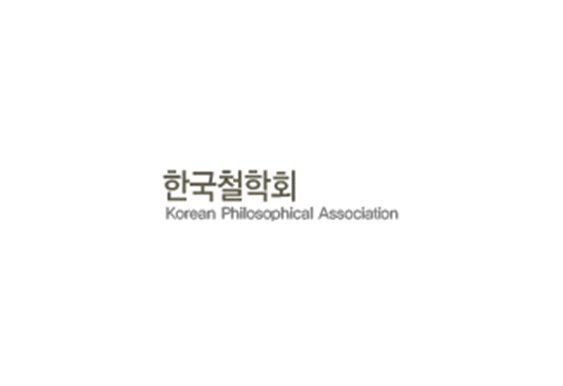묵가 사상의 변천에 관한 연구(Ⅱ) – 전국시대 후기에서 전한시대 초기의 특징을 중심으로 –
A Study of Changes in Mohist Thought(Ⅱ) – Focusing on the Characteristics from the Late Warring States Period to the Early Western Han Dynasty –
성정홍
성균관대학교 유학동양한국철학과
철학
2024, vol., no.159, pp. 1-34 (34 pages)
10.18694/KJP.2024.5.159.1
한국철학회
초록
비공(非攻)은 묵가의 대표적인 주장이다. 그런데 「비공 상」은 단순히 전쟁이 의롭지(義) 못하다는 이유에서 비공을 주장한다. 반면에 「비공 중」은 전쟁으로 얻는 이익(利)보다 손해가 더 크다는 이유에서 비공을 주장한다. 마지막으로 「비공 하」는 하늘(天)에 근거하여 비공을 주장한다. 비공뿐만이 아니라, 「겸애」와 「상현」도 상·중·하편의 당위성에 대한 논거가 상이하다. 이에 대해 선행 연구들은 묵가 사상이 200여 년 이상에 걸쳐 변천되었고, 그에 따라 당위성의 논거들도 변화되었다고 주장한다. 하지만 묵가 사상의 변천을 인정하더라도 ‘묵가 사상이 어떻게 변천했는가?’에 대해서는 연구자마다 의견이 분분하다. 본 연구는 이를 해결하고자 다음의 방법을 통해 묵가 사상의 변천을 규명한다.
첫째, 『묵경(墨經)』 저술 이후이자, 묵가의 절멸 시기와 근접한 전국시대 후기에서 전한(前漢)시대 초기의 시대적·사상적 특징들을 분석한다. 그 결과 당시 학파들 간의 상호 교류와 비판이 본격화되었고, 제자백가의 사상들을 통합하려는 시도가 발생한 것을 확인할 수 있다. 그리고 통치자들이 예(禮)보다는 상·벌에 기반하는 법(法)을 선호하게 되었으며, 권력을 중앙 집권화한 것을 파악할 수 있다.
둘째, 같은 주장을 하는데도 상이한 논거들을 제시하는 「상현 상·중·하」, 「겸애 상·중·하」, 「비공 상·중·하」를 분석한다. 그 결과 하늘이 등장하는 편들은 공통적으로 상·벌과 법을 중요한 통치 수단으로 긍정하고, 주장의 논거들이 다양하며, 고사와 문헌의 인용도 증가하는 모습을 확인할 수 있다. 이러한 경향은 하늘이 상·벌의 주재자로 등장하는 편들에서 더욱 두드러진다. 즉, 하늘이 상·벌의 주재자로 등장하는 편들에서 전국시대 후기에서 전한시대 초기의 시대적·사상적 특징들이 드러나는 것을 파악할 수 있다.
본 연구는 이상의 과정을 통해 상·벌을 주재하는 하늘이 『묵경』 이후, 묵가의 절멸 시기와 근접한 후기 묵가의 개념인 것을 주장한다.
The principle of “condemnation of offensive war” (feigong 非攻) is a quintessential tenet of Mohism. However, the rationale behind advocating condemnation of offensive war varies across different chapters. In Fei Gong Upper (非攻 上), condemnation of offensive war is advocated based on the ethical argument against harming others. In contrast, Fei Gong Middle (非攻 中) argues for condemnation of offensive war from the perspective that the losses in war outweigh its benefits. Finally, Fei Gong Lower (非攻 下) bases its advocacy of condemnation of offensive war on the will of Heaven (tian 天). This diversity in rationale is not unique to Feigong; the chapters of Jian Ai 兼愛 (Universal Love) and Shang Xian 尙賢 (Exaltation of the Virtuous) also exhibit differing justifications across their respective Upper, Middle, and Lower parts. Previous studies have attributed this variation to the evolution of Mohist thought over more than two centuries. Nevertheless, despite acknowledging this evolution, scholarly opinions remain divided on the specifics of how Mohist thought changed. This study seeks to elucidate the change of Mohist thought through the following process.
Firstly, I analyze the temporal and ideological characteristics of the period from the late Warring States to the early Western Han Dynasty, closely aligned with the extinction period of Mohism. This analysis reveals an era marked by increased interaction and criticism among various schools of thought, attempts to integrate the philosophies of the Hundred Schools of Thought, a shift in rulers’ preferences from ritual (li 禮) to rewards and punishments (shangfa 賞罰) as foundational to law (fa 法), and efforts towards centralization of power.
Secondly, I examine chapters like Shang Xian Upper, Middle, and Lower, Jian Ai Upper, Middle, and Lower, and Fei Gong Upper, Middle, and Lower, which, despite advocating the same ideas, present different justifications. This analysis indicates that texts mentioning Heaven commonly affirm rewards, punishments, and law as vital tools of governance, showcase diverse arguments, and increasingly reference historical events and texts. This trend is particularly pronounced in chapters where Heaven is portrayed as the primary overseer of rewards and punishments.
Through these processes, this study asserts that in Mohist thought, the concept of Heaven as the overseer of rewards and punishments emerged in the later phases of Mohism, closely preceding its extinction, post Mohist Canon (Mo Jing 墨經) era.

